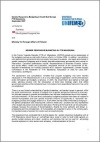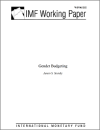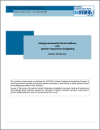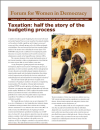FOUND 10
This fact sheet was produced by UNIFEM in 2007 under the UNIFEM sub -regional programme "Gender-Responsive Budgeting in South East Europe: Advancing Gender Equality and Democratic Governance through Increased Transparency and Accountability launched in late 2006.
This paper explains what GRB is, what GRB work has help achieved and how it can further contribute to achieving gender equity and equality.
This book aims to contribute to the evolving understanding of public expenditure management as a political, rather than a purely technical, process. In particular, it explores the ways in which a rights approach can contribute to strengthening pro-poor voice and outcomes in budget processes.
This paper on SMEs in Vietnam, looks into biases that help explain the higher costs and lower profits of female-owned enterprises. It brings together gender analysis, small scale enterprise analysis, and gender budget analysis in a development context by demonstrating that gender mat
This IMF Working Paper examines how public processes can contribute to improving women's status. Gender budgeting, which refers to the systematic examination of budget programs and policies for their impact on women, has been tried in a range of countries in recent years.
The paper reviews the literature on the gender dimensions of taxation and the implications for tax policy with special reference to developing countries. It was commissioned by the Commonwealth Secretariat as part of the organization's commitment to integrate gender concerns into economic policy.
This document, represents the gender analysis that was conducted on Tanzania's 2003-2004 National Budget.
This guidance sheet on Intergovernmental fiscal relations and gender-responsive budgeting is a UNIFEM publication written by Debbie Budlender in December 2006.
The document by Forum for Women in Democracy (FOWODE), is a brief paper on the gender analysis of the Uganda taxation sector.
The document provides a gender analysis of the Australian Treasurer's 2006/2007 budgetary changes by examining the gender impacts of newly introduced tax concessions.








